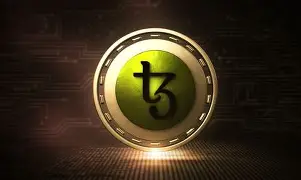Tezos is a self-upgrading, open-source blockchain platform that stands out for its on-chain governance, advanced smart contract features, and sustainable consensus mechanism. Since its launch in 2018, Tezos has carved a unique space in the Web3 ecosystem, offering a forward-thinking alternative to many traditional blockchains. Its native token, XTZ, supports network operations, staking, and governance, making it a versatile and valuable asset in the crypto world.
In this article, we’ll explore what makes Tezos special, its staking opportunities, use cases, and why it remains relevant in 2025.
What Makes Tezos Unique?
Tezos was built from the ground up with adaptability in mind. Its standout feature is on-chain governance, allowing protocol upgrades without needing hard forks. Token holders participate in a formalized governance process to vote on proposed changes. This democratic system promotes network cohesion and long-term growth.
Another distinguishing feature is formal verification, a process of mathematically proving the correctness of smart contracts. This is especially useful for applications where security and correctness are critical, such as finance, insurance, and supply chain tracking.
Staking on Tezos: A Strong Incentive
Tezos uses a Liquid Proof-of-Stake (LPoS) mechanism, which allows token holders to participate in securing the network and earn rewards. Here’s how staking works:
- Delegated Staking: Users can delegate their XTZ to a validator (called a “baker”) without transferring ownership of their tokens.
- High Yields: Staking rewards on Tezos are among the most competitive in the crypto industry, offering up to 16.5% annual returns depending on the validator and market conditions.
- Unstaking Flexibility: The unstaking period is relatively short, typically around five days, making it easy to move your tokens when needed.
This system encourages widespreadq participation and adds an income layer for long-term holders.
Tezos in 2025: Use Cases and Adoption
In 2025, Tezos continues to gain traction in various sectors:
- NFTs and Digital Art: Tezos is a preferred blockchain for environmentally friendly NFTs due to its low-energy design. Many artists and platforms choose Tezos for its affordability and sustainability.
- DeFi: Decentralized exchanges and yield farming projects are steadily growing within the Tezos ecosystem. Platforms using Tezos benefit from fast transaction speeds and minimal gas fees.
- Gaming and Metaverse: Companies in the gaming industry are integrating Tezos into their ecosystems to enable tokenization, in-game economies, and NFT assets.
- Financial Services: Tezos’s formal8 verification and upgradeability make it attractive to enterprises looking to tokenize assets and improve transparency.
This expanding utility is a key reason why more developers and institutions are turning to Tezos for blockchain solutions.
Market Performance and Outlook
The Tezos token (XTZ) has seen its share of volatility, like most cryptocurrencies. However, its fundamentals remain strong. With increasing staking participation, governance-driven upgrades, and strategic partnerships, the long-term outlook for Tezos appears positive.
Some market analysts predict that XTZ could double or even triple in value over the next few years, particularly if institutional adoption continues to rise. Factors such as rising developer activity, expanding real-world use cases, and consistent upgrades contribute to its growth potential.
Ecosystem Growth and Developer Activity
Tezos is home to a vibrant community of developers and builders. Regular hackathons, grants, and education initiatives are helping to expandq the Tezos ecosystem. The developer tools are robust and supported by an active community that continually builds wallets, DeFi protocols, NFT platforms, and decentralized applications.
The self-amending protocol ensures that improvements can be rolled out seamlessly, giving developers a stable and upgradable environment to work in. As more use cases emerge, Tezos’s infrastructure continues to evolve, adding features like scalability enhancements and advanced contract functionality.
Environmental Sustainability
One of the biggest criticisms of blockchain technology has been its environmental impact. Tezos addresses this concern directly with its energy-efficient proof-of-stake mechanism. Compared to energy-heavy networks like Bitcoin, Tezos consumes a fraction of the power while still maintaining high levels of security and decentralization.
This commitment to sustainability has made Tezos a go-to platform for eco-conscious developers, artists, and institutions looking for green blockchain solutions.
Challenges and Road Ahead
Despite its many advantages, Tezos faces competition from newer Layer-1 blockchains and must continually innovate to retain its edge. Adoption can be slower due to its unique coding language, Michelson, which has a steeper learning curve compared to Solidity used by Ethereum.
However, Tezos’s adaptability, community involvement, and commitment9 to innovation position it well for future growth. Ongoing upgrades and new partnerships in finance, gaming, and art sectors are helping to strengthen its foundation for long-term relevance.
Conclusion
Tezos has proven itself as a forward-thinking blockchain with real utility, strong governance, and a sustainable infrastructure. Its Liquid Proof-of-Stake model, formal verification, and upgradeability make it a unique player in the crowded crypto landscape.
Whether you’re a developer, investor, or enthusiast, Tezos offers a solid blend of innovation, rewards, and potential. As it continues to mature and evolve, Tezos stands as a reliable and promising blockchain ecosystem worth watching in the years ahead.
Also Read: How to Buy Cryptocurrency in India: A Step-by-Step Guide
